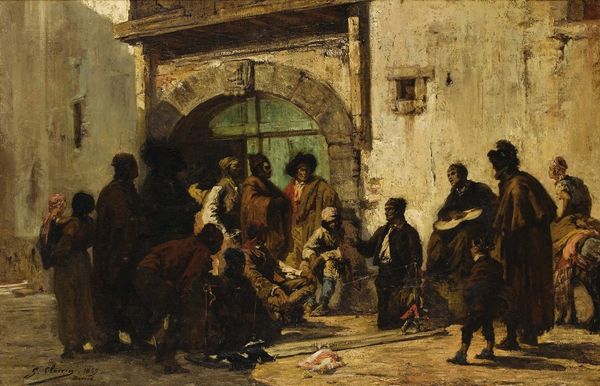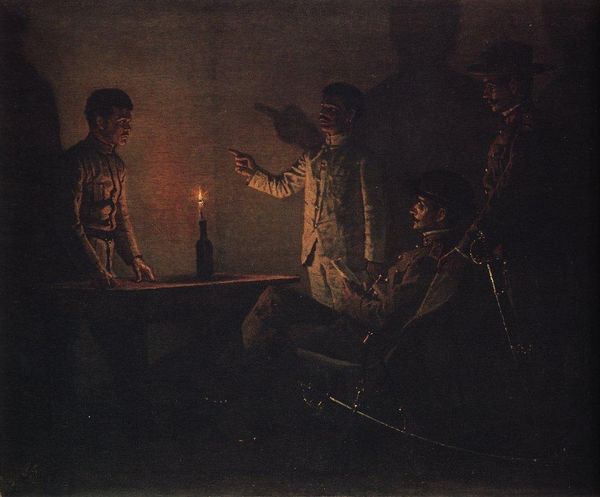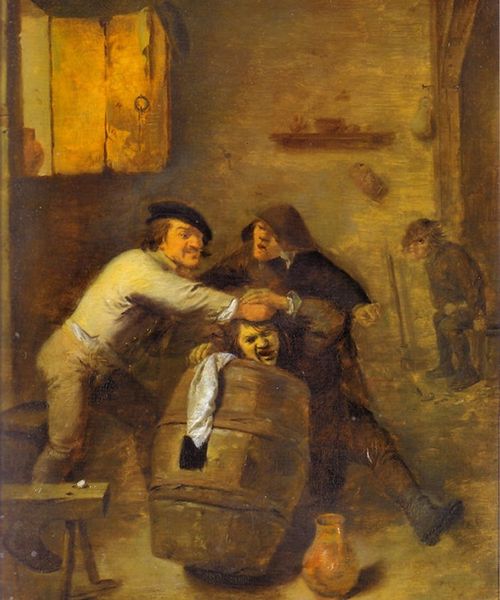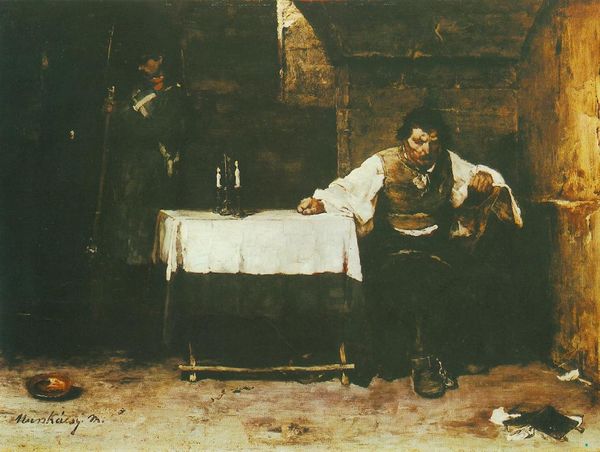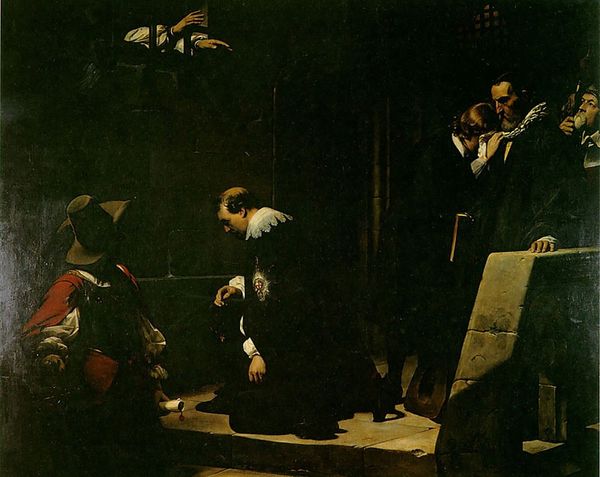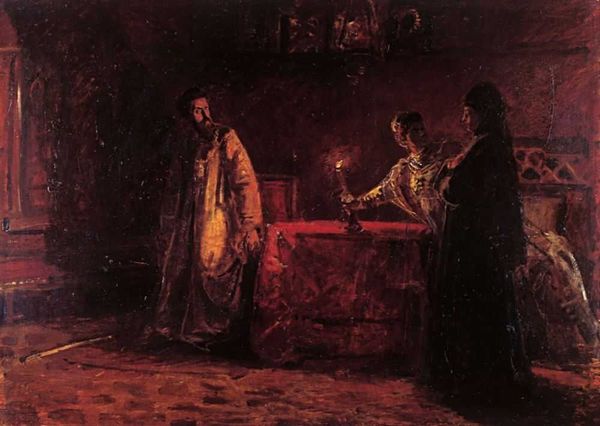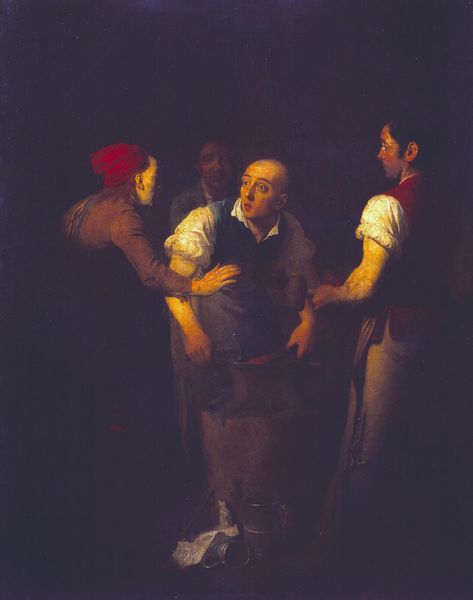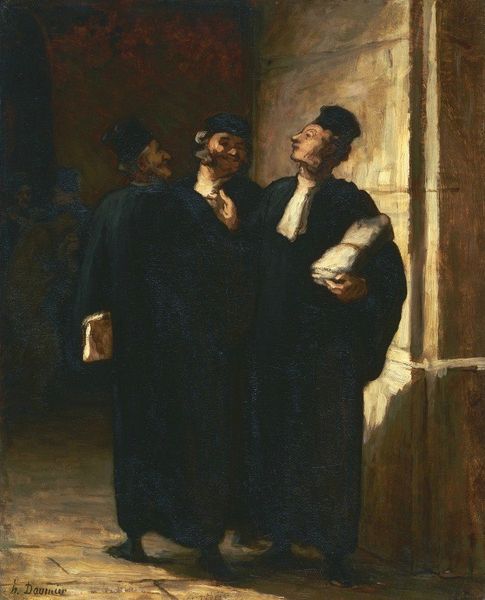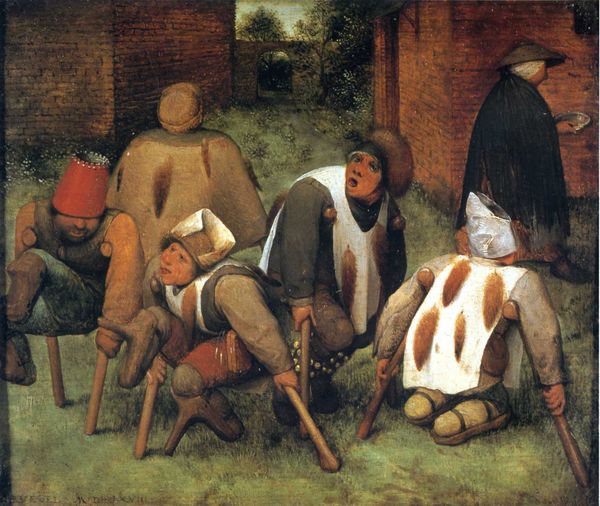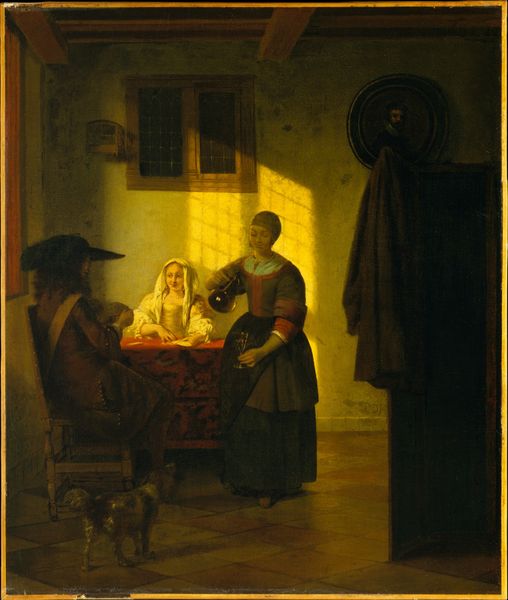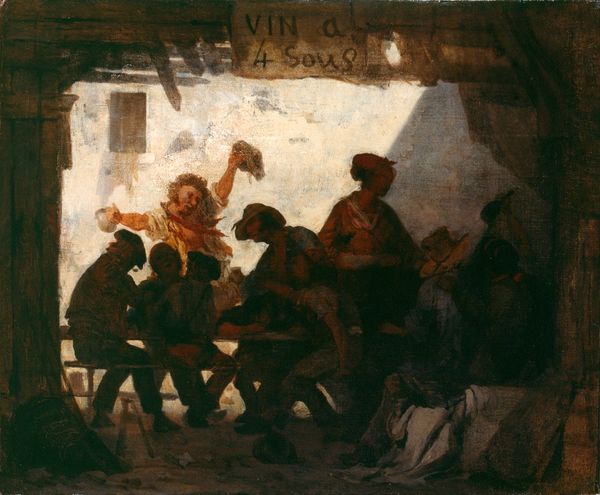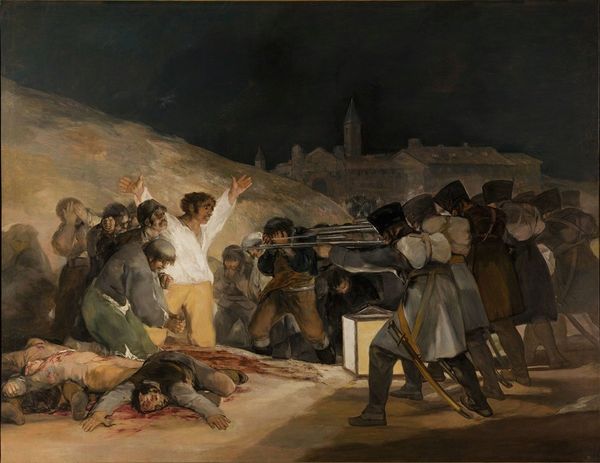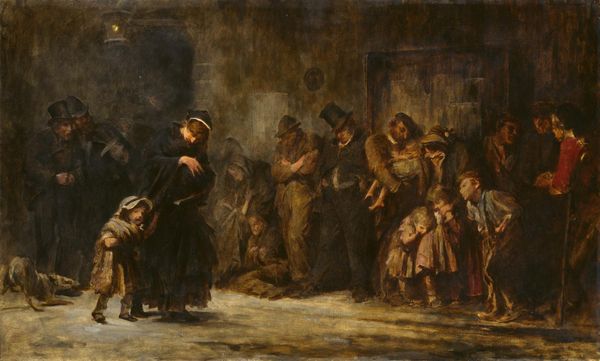
painting, oil-paint
#
narrative-art
#
painting
#
oil-paint
#
genre-painting
#
realism
Dimensions: 80 x 109 cm
Copyright: Public domain
Editor: So, this is Aleksander Gierymski’s "The Game of Morra," painted in 1874. It's oil on canvas. The mood is… intensely focused, wouldn't you say? Almost a gritty sort of energy. What strikes you most when you look at this? Curator: The first thing that stands out is the depiction of working-class men engaged in this very physical, almost ritualistic game. It reflects a growing trend in 19th-century art to portray everyday life, a departure from strictly historical or mythological subjects. Have you considered how the painting's realism connects to the rise of positivism and scientific observation influencing artistic practices? Editor: That's interesting, I hadn't thought of it that way. I see how the artist's keen observation captures their expressions and gestures so precisely. But how would a game of Morra gain so much artistic significance? Curator: Precisely. Consider the politics of imagery at play here. Gierymski elevating the everyday to the realm of high art makes a statement about what—and *who*—is worthy of representation within cultural institutions. The subjects are laborers, not aristocrats, right? What do you see that tells us about who controls art, who gets to view it, and the conversations it spurs about social class? Editor: Well, showing these men playing gives them dignity and, perhaps, highlights their community, but in an informal context. It is fascinating that what we see and do reflects certain political undertones of society. Curator: Exactly! It gives these ordinary moments a voice. Looking at “The Game of Morra” in this way gives us insight not just to Aleksander Gierymski’s art, but also the era's cultural anxieties. Thanks for making me revisit this perspective! Editor: Absolutely, this lens allows for deeper investigation! I see "The Game of Morra" with new eyes now, too.
Comments
No comments
Be the first to comment and join the conversation on the ultimate creative platform.
